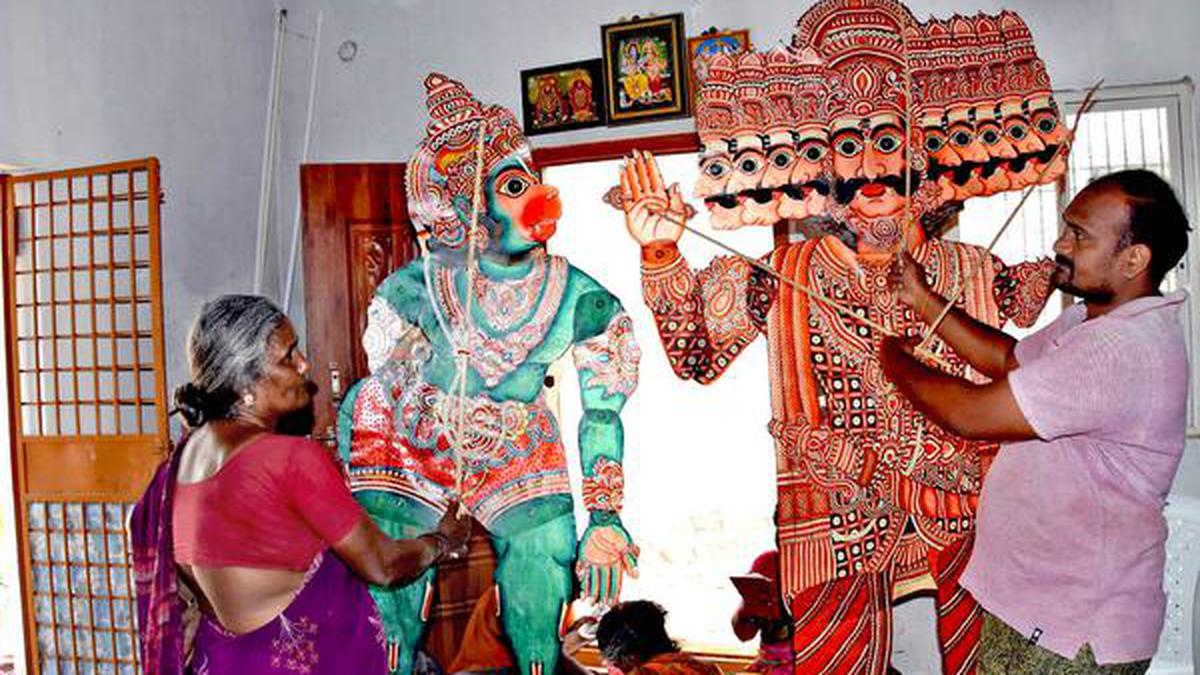
Behind the veil of fame, an untold story of leather puppetry artists’ financial struggles Premium
The Hindu
Puttaparthi leather puppet artists struggle to preserve centuries-old tradition amidst changing entertainment trends and financial challenges.
As Dalavai Sivamma immerses the goat hide in a vessel of boiling water, her son Durgesh uses a blade to scrape the surface of dried skin to remove the remnants of fur and ensure a smooth finish.
Going by the gruelling task and her simple attire, it is hard to believe that Sivamma is a national award-winning leather puppet artist (2019). Not just her, there are 12 national award winners from her community, including a Padma Shri awardee, Dalavai Chalapathi Rao.
The glory of this dusty little village of Nimmalakunta in the newly-carved out Sri Sathya Sai district of Andhra Pradesh is not known even in the district headquarters town of Puttaparthi. Situated 12 km from Dharmavaram town, known for authentic handloom saris, this sleepy village has 150 houses, half of them belonging to this tribe called Tholubommalatagallu.
Almost five centuries ago, the leather puppetry artists were hailed as the champions of Sanatana Dharma for promoting epics like the Ramayana and the Mahabharata among the unlettered masses, in the garb of providing entertainment. In the current scenario when the modes of entertainment have drastically changed, their successors are struggling to make ends meet, with less than an invitation to perform in an entire month.
The artists have their roots firmly entrenched somewhere in the Maratha land, the exact location not known to them today. The nomadic community used to move in bullock carts to reach villages, perform puppet shows during temple festivals and village fairs, earn princely remuneration from the kings, landlords or local chieftains and then move on to another village.
Since their performances always revolved around the Ramayana and the Mahabharata, the storytellers were hailed for spreading moral values through noble characters like Rama, Krishna and Arjuna. “Though the characters were made available in the form of books and wall paintings by then, our ancestors were the first to creatively visualise how Rama or Ravana or Hanuman looked like. They designed the puppets accordingly and presented them before the audience,” says Dalavai Kullayappa, another son of Sivamma. Kullayappa is also a two-time national award winner for the same art form, having been honoured in 2010 and 2017.
The puppetry artists were the most-sought-after in making nights lively during fairs. While their days are spent at the temple, the villagers are engaged during the nights through cultural art forms like music and dance shows, puppetry etc.

In a breathtaking display of musical prowess, the Singspirations, a Tiruchi-based choir group, in collaboration with the Glauben Ensemble and the Genesis Chamber Orchestra, presented a sublime performance of Wolfgang Amadeus Mozart’s Requiem in D minor, K. 626, in its entirety, mesmerising audiences.












